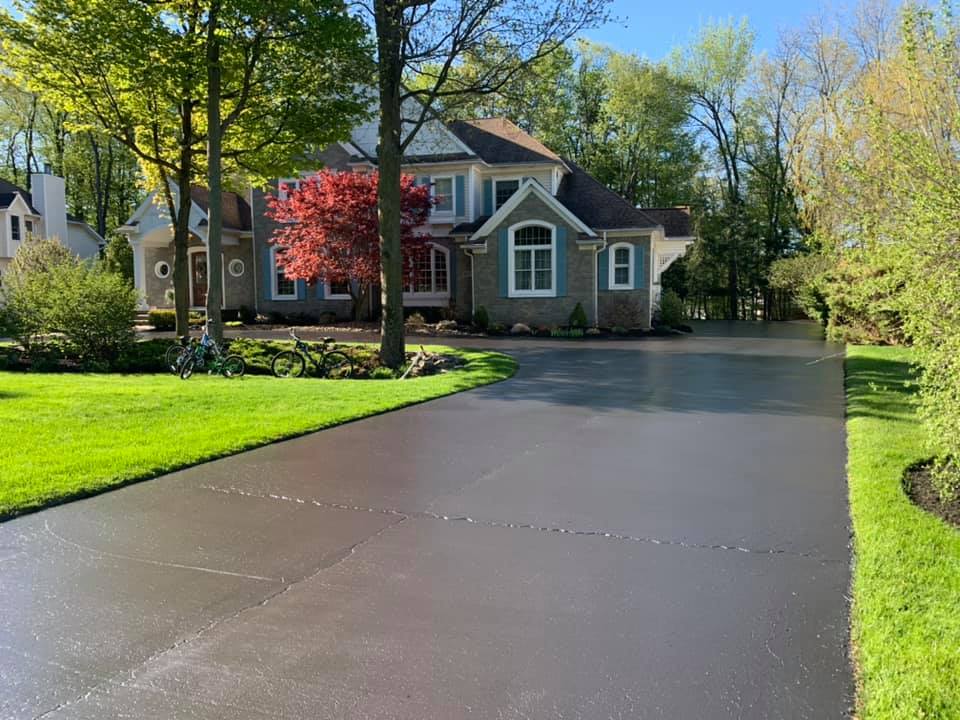Swift Solutions for Asphalt Patch Repair: Optimal Sealing Techniques
Swift Solutions for Asphalt Patch Repair: Optimal Sealing Techniques
Blog Article
Cold Mix Asphalt Vs. Hot Mix Asphalt: Which Is Right for You?

Structure Distinctions
Cold mix and hot mix asphalts vary considerably in their make-up, with distinct attributes that influence their performance and applications. Cold mix asphalt is created by emulsifying the asphalt binder with water and an emulsifying representative before mixing it with accumulation. This approach enables the asphalt to be convenient at reduced temperatures, making it optimal for short-lived repair work and for usage in cooler weather. Hot mix asphalt, on the various other hand, is made at heats, usually in between 300-350 ° F, which aids to achieve better compaction and a much more long lasting end product. The hot mix asphalt production process includes heating up the accumulation and asphalt binder independently prior to combining them at the asphalt plant.
Additionally, chilly mix asphalt has a tendency to be less dense and a lot more versatile than warm mix asphalt. This versatility makes it much better fit for locations with higher levels of movement, such as driveways or roads with heavy traffic. In contrast, warm mix asphalt is recognized for its high resilience and resistance to rutting and cracking, making it a recommended selection for freeways and high-traffic roadways where longevity is essential.
Installation Process Variances
The process of setting up cold mix and hot mix asphalt shows notable differences in their procedures and demands. In comparison, warm mix asphalt necessitates a much more intricate installation procedure. Due to the home heating requirements, hot mix asphalt setups are typically brought out by specialists with specialized devices, making certain a much more irreversible and structurally sound result.
Durability and Longevity Elements
When taking into consideration asphalt choices, sturdiness and durability are important elements to evaluate for long-term sidewalk performance. Warm mix asphalt (HMA) is understood for its extraordinary sturdiness and longevity.
In regards to durability, HMA generally surpasses CMA due to its remarkable stamina and resistance residential properties. HMA pavements have a longer solution life, needing less regular repair work and upkeep, which can equate to cost financial savings over time. In addition, HMA pavements are extra quickly customizable to fulfill specific task requirements, better improving their longevity.
Expense Factors To Consider
Thinking about the financial ramifications is an important facet when evaluating the selection in between warm mix asphalt (HMA) and cold mix asphalt (CMA) for pavement tasks. While the initial cost of hot mix asphalt is usually greater than that of chilly mix asphalt, HMA often supplies an extra affordable option in the lengthy run due to its remarkable resilience and long life. HMA is recognized for its capability to hold up against rush hour lots and harsh climate condition, lowering the additional resources demand for frequent repair work and upkeep. On the various other hand, cool mix asphalt is more affordable upfront however may need even more constant patching and resurfacing, leading to higher maintenance costs in time.
Along with product costs, it's important to take into consideration the expenses linked with installment and maintenance when comparing HMA and CMA. HMA generally calls for customized devices and competent labor for proper installation, which can influence general project prices. Alternatively, CMA is much easier to work with and can often be used utilizing simpler strategies, potentially reducing installation expenditures. Eventually, the decision in between HMA and CMA should think about not just the first expense but additionally the long-term economic ramifications to identify one of the most economical option for the details pavement task.
Environmental Impact Contrast
Contrast of the environmental influences between warm mix asphalt (HMA) and cold mix asphalt (CMA) discloses distinct distinctions in sustainability practices. HMA manufacturing needs high temperatures, bring about enhanced power intake and greenhouse gas emissions. The process additionally launches volatile organic compounds (VOCs) and harmful air toxins (HAPs) right into the atmosphere. In contrast, CMA is created and used at reduced temperatures, decreasing power use link and exhausts considerably. The lower manufacturing temperature levels of CMA cause lowered fuel consumption and reduced degrees of CO2 emissions, making it a more eco-friendly choice.
In addition, using CMA frequently involves recycling existing asphalt sidewalk, advertising source preservation and minimizing the amount of waste sent to landfills. This recycling facet better boosts the sustainability of CMA contrasted to HMA. Generally, when thinking about the environmental impact, CMA becomes an extra eco lasting option because of its lower energy requirements, decreased emissions, and the potential for recycling existing products. By selecting CMA over HMA, road building jobs can contribute positively to environmental preservation efforts.
Verdict
In verdict, the choice in between cold mix asphalt (CMA) and warm mix asphalt (HMA) depends on different factors such as make-up, installation procedure, sturdiness, longevity, expense, and ecological effect. image source angle parking. While CMA uses a cost-efficient and fast option for minor repair work, HMA makes certain remarkable sturdiness and long life for heavy website traffic areas. Take into consideration these elements carefully to figure out which kind of asphalt is the right option for your paving requires

Taking into consideration the financial effects is an important aspect when examining the choice between warm mix asphalt (HMA) and cold mix asphalt (CMA) for sidewalk tasks. While the initial expense of warm mix asphalt is usually greater than that of cold mix asphalt, HMA commonly provides a more economical solution in the long run due to its remarkable durability and durability. asphalt repair.Comparison of the environmental effects in between warm mix asphalt (HMA) and cool mix asphalt (CMA) reveals distinct differences in sustainability methods.In verdict, the choice between cold mix asphalt (CMA) and hot mix asphalt (HMA) depends on different variables such as make-up, installation process, sturdiness, long life, price, and ecological impact
Report this page